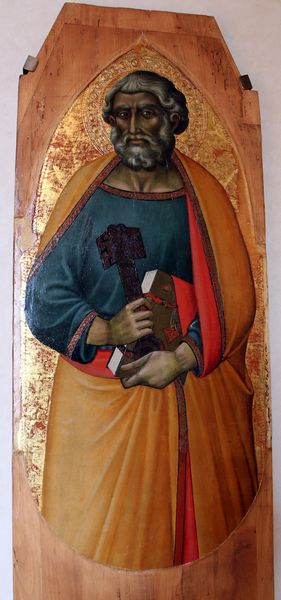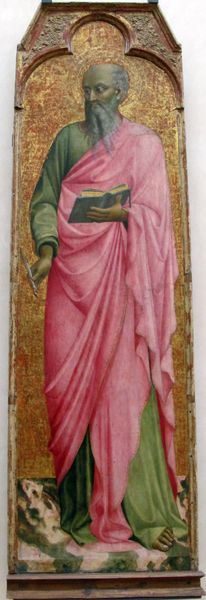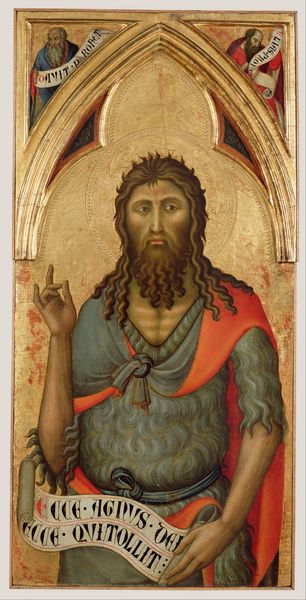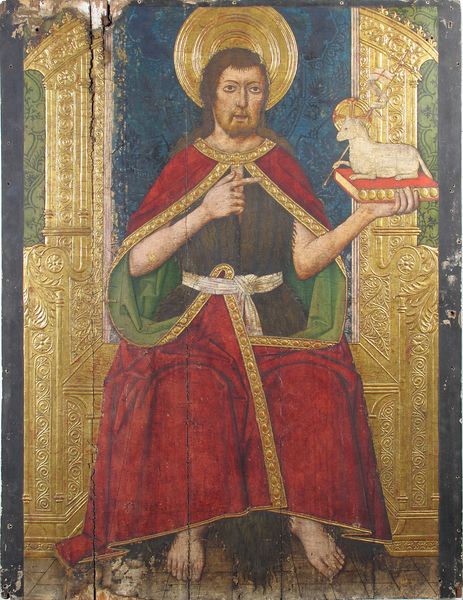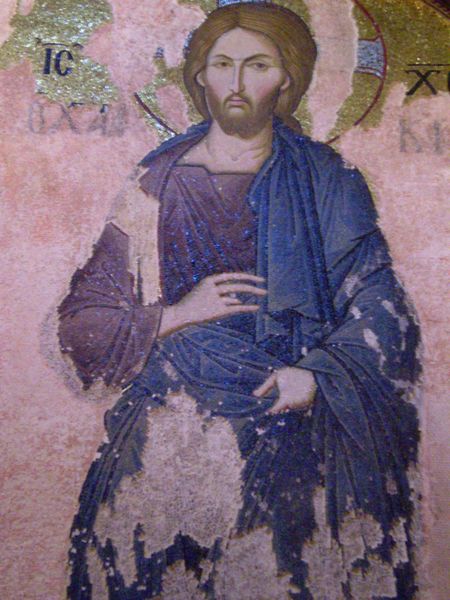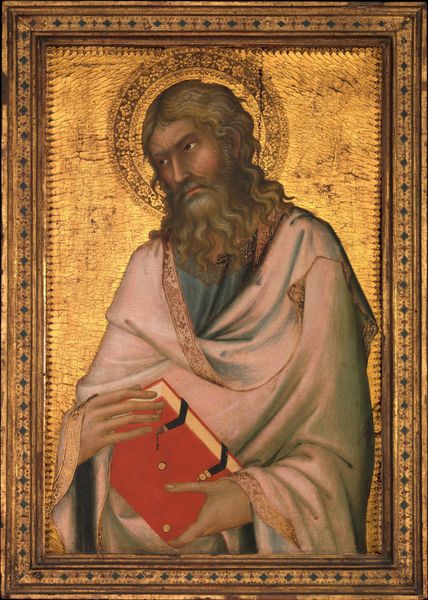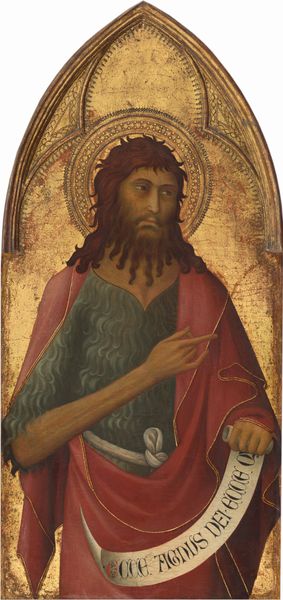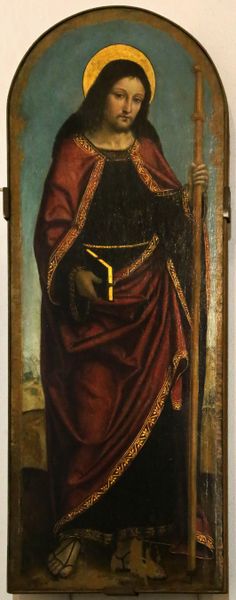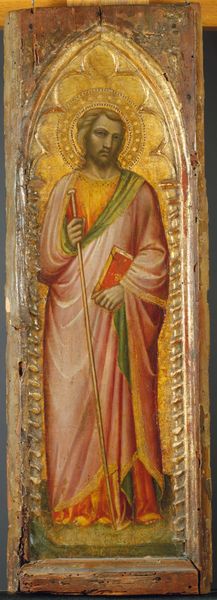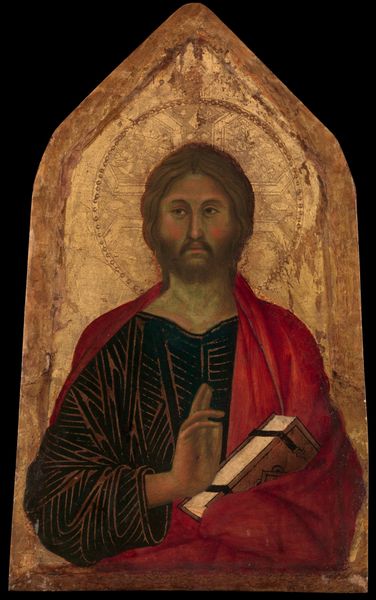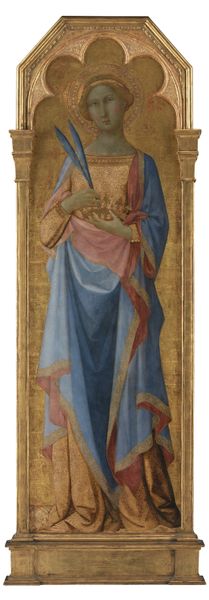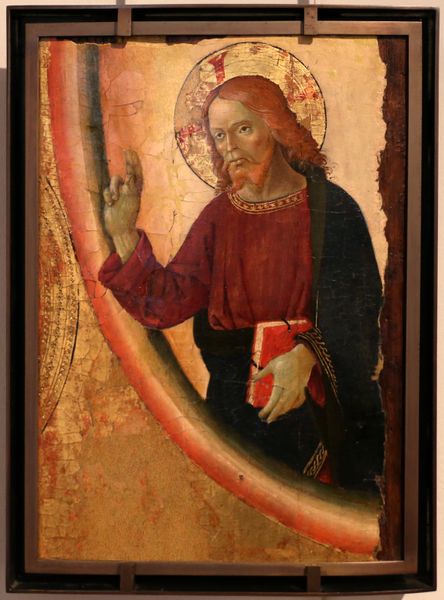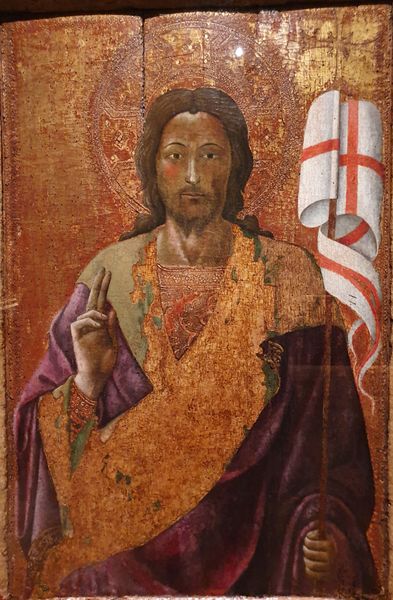
tempera, painting, oil-paint
#
portrait
#
medieval
#
tempera
#
painting
#
oil-paint
#
oil painting
#
italian-renaissance
#
early-renaissance
Copyright: Public domain
Luca di Tommé’s “San Pietro” was made around the mid-14th century, with tempera and gold leaf on a wood panel. The first thing you might notice is the gold ground, achieved by laboriously applying gold leaf, burnishing it to a reflective sheen, and then tooling a pattern into the surface. This was not just decoration; it signaled the spiritual significance of the figure. The tempera paint, made by mixing pigment with egg yolk, gives the surface a distinctive matte quality. Consider, too, the wood panel itself, likely prepared with gesso to create a smooth surface for painting. Wood was the support of choice for many paintings at this time. Notice how its very materiality—the grain, the weight, the substantiality—grounds the image. Looking at this painting, it's easy to focus on the imagery, but remember that its creation involved skilled labor, costly materials, and time-honored techniques passed down through generations of artists. Hopefully you can appreciate how materials, making, and context are crucial to understanding the full meaning of an artwork like this, challenging traditional distinctions between fine art and craft.
Comments
No comments
Be the first to comment and join the conversation on the ultimate creative platform.
